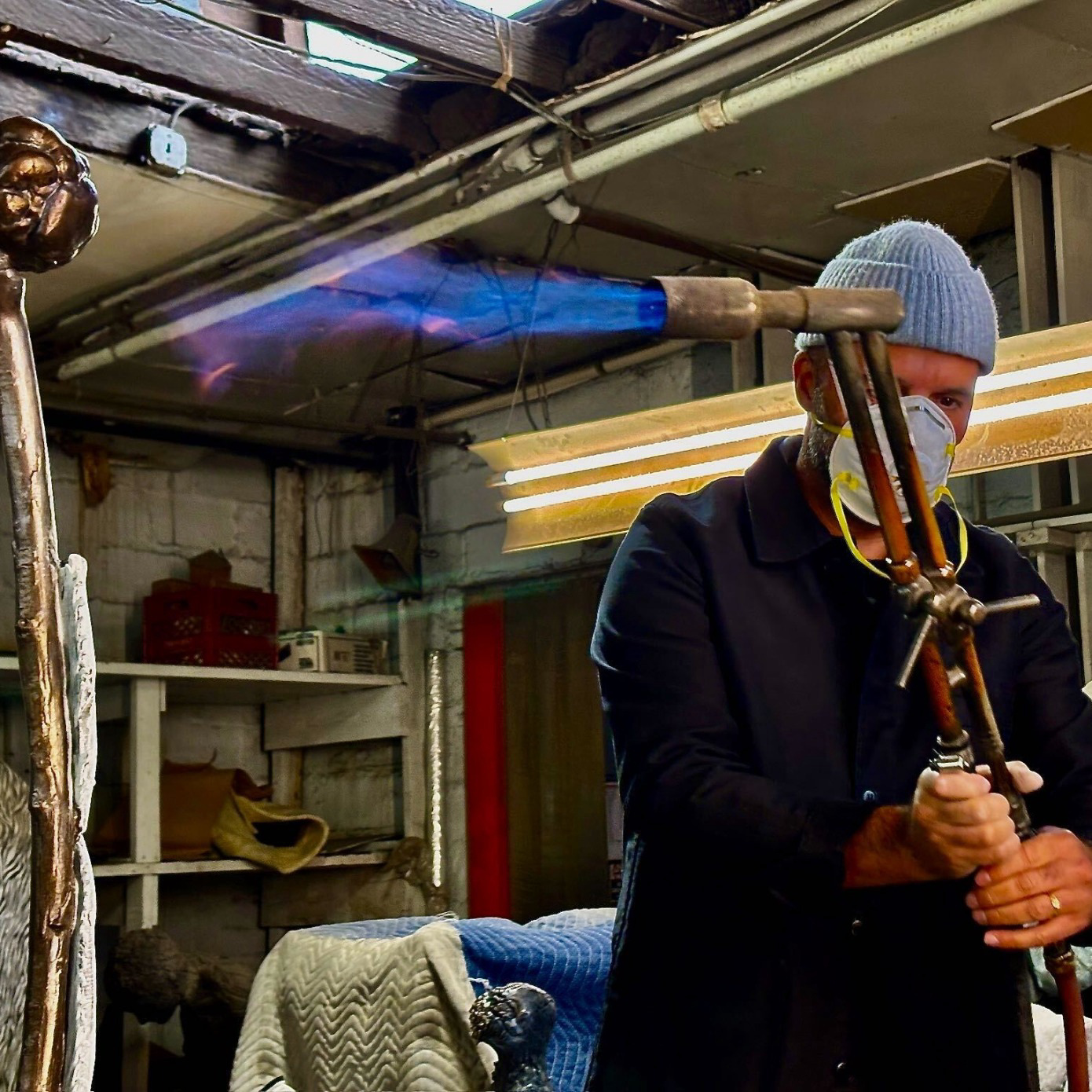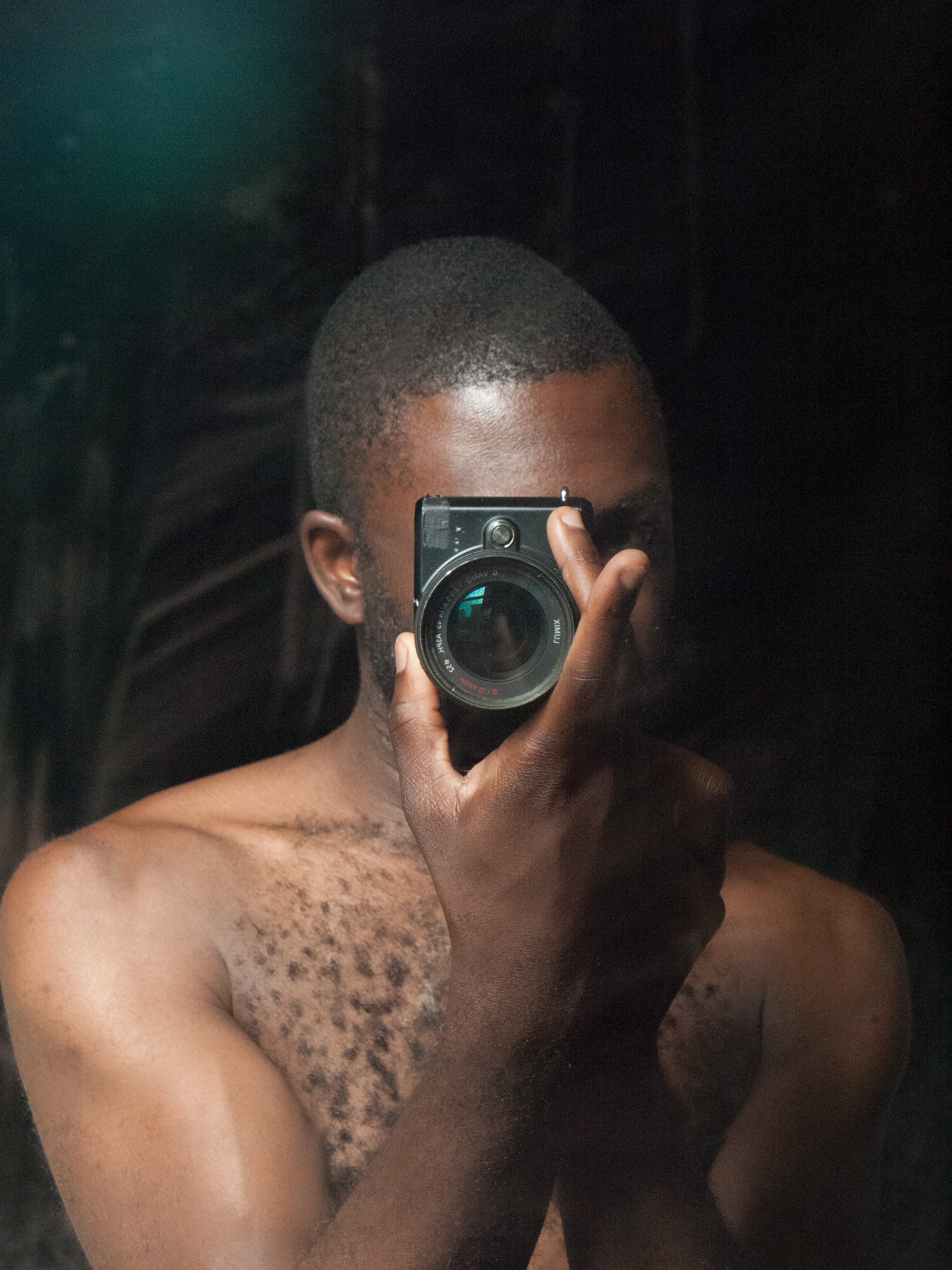
Two shirtless men, one seated, the other standing, touch each other while also touching a camera. The standing man rests his hand on the shoulder of the seated man who, in return, grazes the lower belly of his companion. In a gesture of lovely, tiny intimacy, the seated man places a single finger on that of his companion. This small caress takes place atop the camera, which is positioned near the center of the composition. From within the very space of the photograph, the camera seems to be photographing us. The picture looks back even as we look at it.
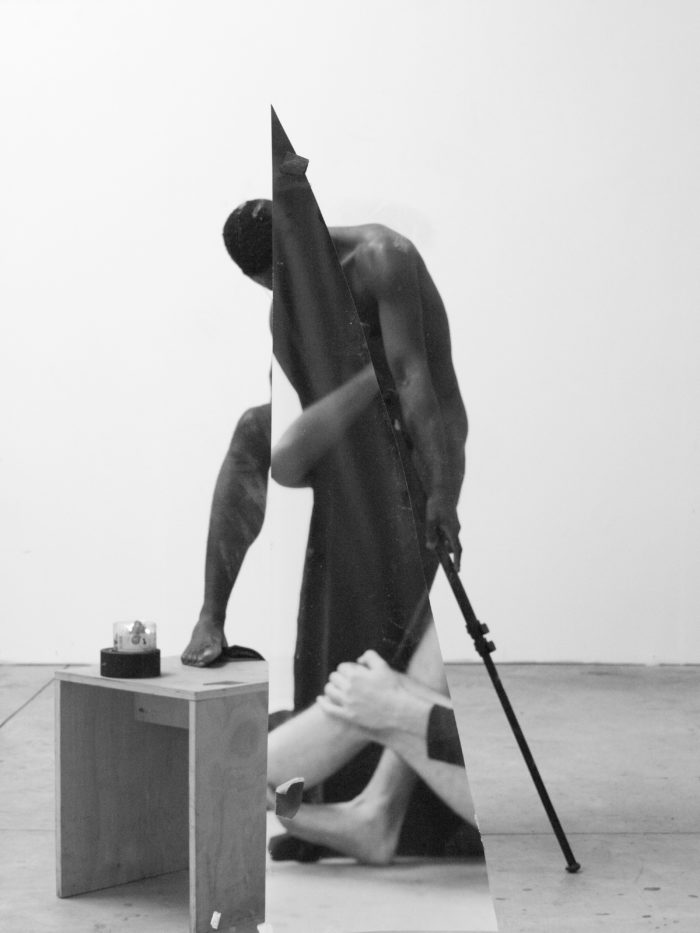
The seated man is also the maker of the picture, the Los Angeles based photographer Paul Mpagi Sepuya. Although I did not realize it at first, the picture was taken in the reflection of a mirror, something that becomes clear when one notices the reversed lettering circling the lens of the camera. The photograph, Darkroom Mirror (0X5A1830) (2017), is from a series called Dark Room, a double entendre that refers both to the dark room of photography and to the low-lit back rooms in gay bars reserved for cruising and casual sex. Both darkrooms are places of physical contact, whether between chemically sensitive paper and developing agents or between the bodies of two (or more) men. There is a third dark space at issue in the photograph, a space delineated by the black velvet backdrop against which the men appear. Sepuya attends to the smallest of visual details and differences: the folds, crush and subtle patterning of the velvet scrim, the sheen and sweat on the face of the standing man, the almost imperceptible dust on the surface of the camera’s lens. He reconciles these differences within a coherent and persuasive composition, the space of “a dark room” in which desire is permitted to develop before our eyes.

Sepuya’s career has, as they say, exploded. The art world’s “aha” moment of discovery occurred last year when the photographer had a one man show with the prestigious Yancey Richardson Gallery in New York City. Among those who snapped up pictures were The Museum of Modern Art, the Whitney Museum of American Art and the International Center of Photography. Not bad for a relatively unknown artist just out of graduate school at UCLA. Later in 2017, Sepuya was included in the New Museum’s groundbreaking “Trigger: Gender as a Tool and a Weapon.” The show considered the shifting categories of gender and sexuality in contemporary art, especially work by queer-identified, trans and gender-nonconforming artists. The pictures acquired by the Museum of Modern Art are on display in a show entitled “Being: New Photography 2018” through August 19. Preceding all of this mainstream attention, Sepuya was given crucial support from nonprofit, community-based spaces such as Franklin Art Works in Minneapolis and Art Speak in Vancouver.
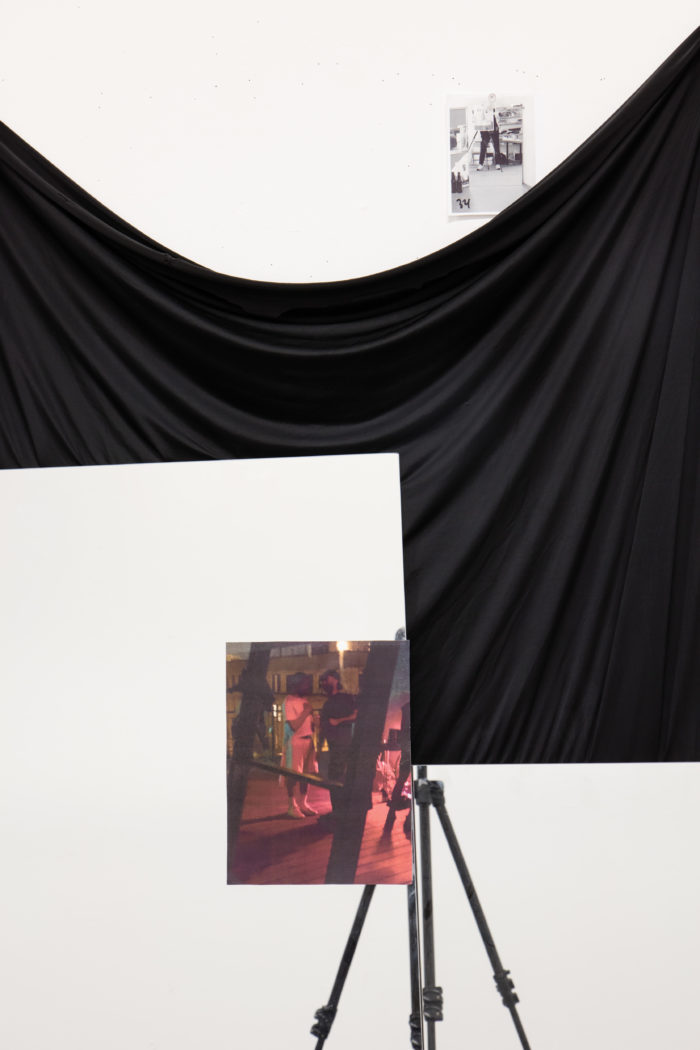
What is it that the contemporary art world so admires in—or desires from—Sepuya? Perhaps the pictorial confidence of an unapologetically queer Black artist whose work never falls into a predictable or preachy form of identity politics. Sexy without being explicitly sexual, Sepuya’s pictures both draw upon and update the history of studio photography.
Beautiful male bodies frequently appear in the artist’s work. So too do mirrors, cameras, studio trappings, and fragments of other photographs, pictures within pictures. The effect is collage like—fragments of the figure float before us in different formats. Outstretched arms overlay photographed legs, creating a relay of bodies across time and space. Studio objects usually kept off camera creep into view: photographic prints, backdrops, tripods, a model’s disheveled clothing, in one case even a roll of paper towels. There is virtually nothing in the studio that escapes this photographer’s eye.
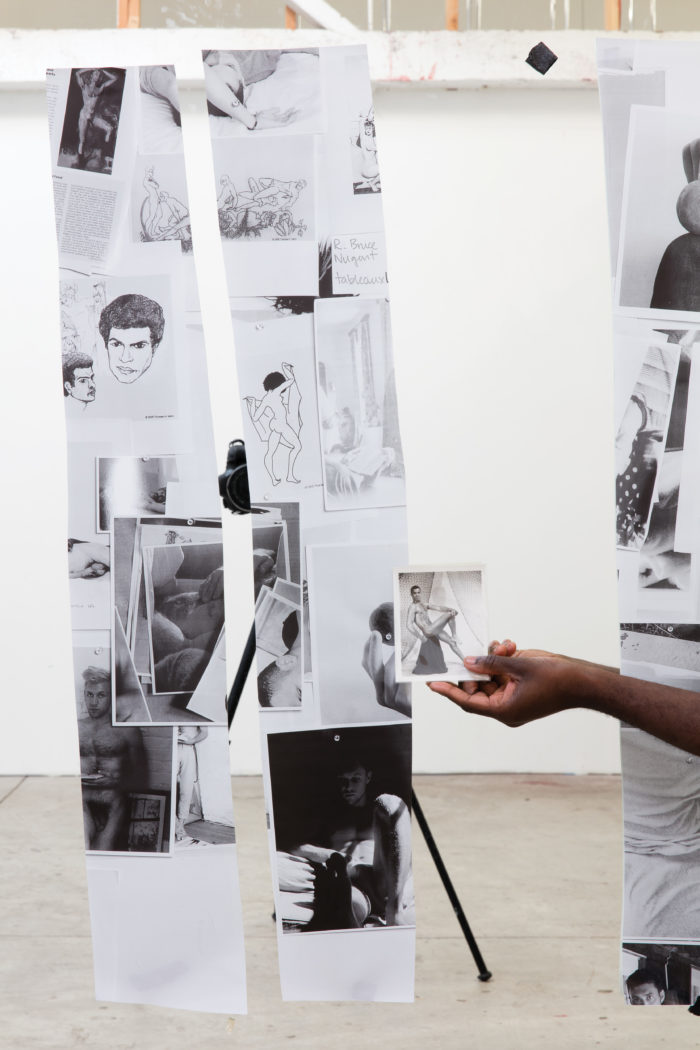
One of Sepuya’s pictures layers the history of studio art and photography in a particularly haunting and effective way. It features three long, curtain-like expanses of paper, horizontal segments of another photograph of a wall in the artist’s studio, to which a number of drawings, clippings, and photographs have been affixed. These annotations include several drawings by Richard Bruce Nugent, a leading Black gay poet and visual artist in the Harlem Renaissance, Larry Rivers’ startling 1954 portrait of Frank O’Hara naked save for his leather boots, and a 1934 Cecil Beaton photograph of the homosexual painter, Pavel Tchelitchew, in the midst of portraying Peter Watson, an English collector and “benefactor” (shall we say) of other men. A partial view of a camera on a tripod peeks out from behind two of the paper curtains.
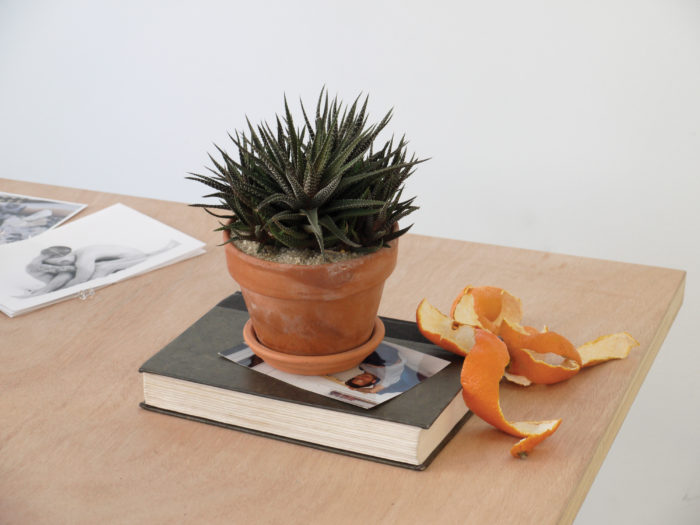
The picture is titled Mirror Study for Vince (0X5A0172) because it was made as a gift to the photography critic and historian Vince Aletti. The 1950s beefcake picture held by the outstretched hand (likely Sepuya’s) in the photograph was, in turn, a gift from Aletti. In addition to the physique photograph, several female nudes appear on the curtain-like studio notes as do fragments of Sepuya’s own work. Mirror Study for Vince (0X5A0172) conjures a short history of queer cultural production within the space of a contemporary photo-studio. It demonstrates how Sepuya’s working method becomes his creative product. Historical research charges and changes current realities.
We live in an intensely visual culture. Images stream at and surround us, sometimes relentlessly. Sepuya’s photography slows the stream of images down so that we look more closely and also more tenderly. According to the artist, “There is no question about keeping my passion for art alive. The only question is of growth and sustainability as a career. Photographs are easy. Being a working artist is the hard part.” While making a photograph may be “easy” in our digital age, there is nothing simple about the intricate layering of time, space and imagery that Sepuya accomplishes. As for his ongoing career as an artist, we can only look forward to watching him make the most of “the hard part.”
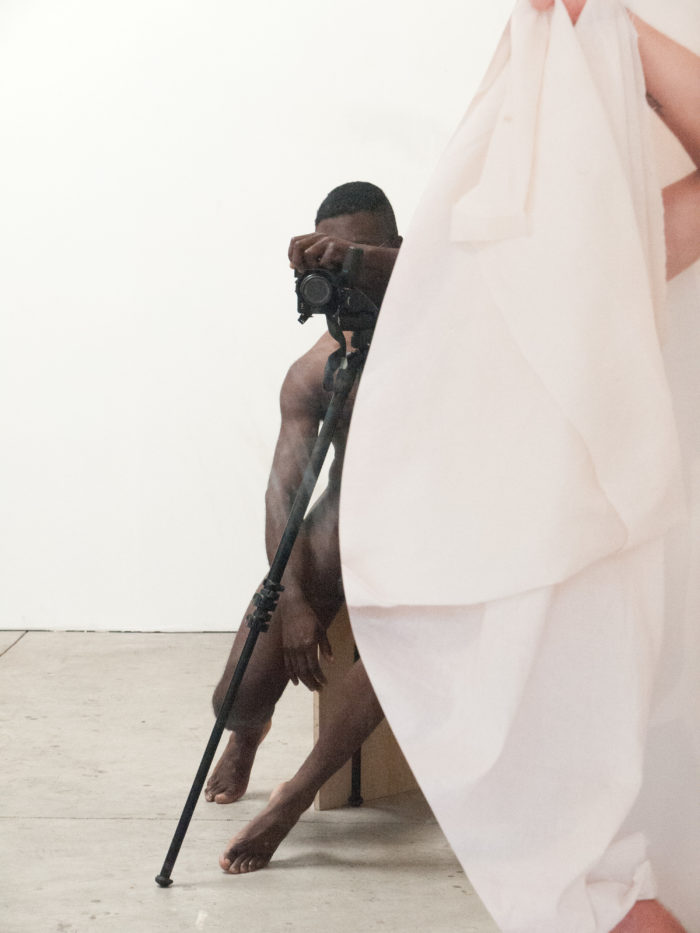
Originally commissioned for LALA's 2018 Summer issue.

